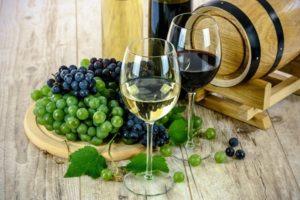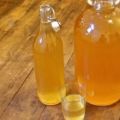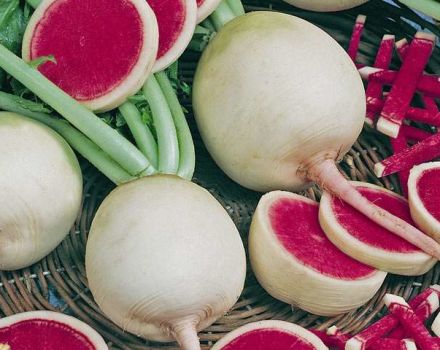The best recipes on how to make wine from sour grapes at home
The acidity level is the most important parameter of grapes. Tartaric and malic acids in the berry make up 90%, the remaining 10% are allocated to organic, aromatic phenolic acids. With increased acidity, the fruits are used to make wine, fruit drink. Winemakers recommend making wine from sour grape varieties. By adjusting the acidity level, you can get a delicious, aromatic drink.
Process features
The berries are harvested by hand at the end of September in dry weather. The collected bunches are not washed to preserve the wild yeast on the berries. They stimulate fermentation. The harvested crop is sorted by removing rotten, cracked, green, spotted specimens.
To obtain a quality product, the following conditions must be observed:
- The wine is made from fresh berries. It is important not to grind the grapes into puree. Crushed bones add bitterness to the drink.
- It is necessary to observe the terms of expressing, transfusing the drink. In case of untimely filtration, the taste characteristics of the wine will deteriorate.
- Winemakers prefer wooden, plastic, enameled containers for preparing a drink. It is recommended to use glass and stainless steel dishes. Do not use metal pots / pans.
- Berries are not washed or rinsed. The fruit washing process helps to remove wild yeast from the surface. They are necessary to preserve their natural environment, to prevent the development of pathogenic microorganisms.
- In the presence of moldiness, bacteria, the wine turns sour. This process can be prevented by sterilizing containers and instruments.
The bottles are washed with soap / soda solution, scalded with boiling water, rinsed. The containers are dried naturally or with paper towels.
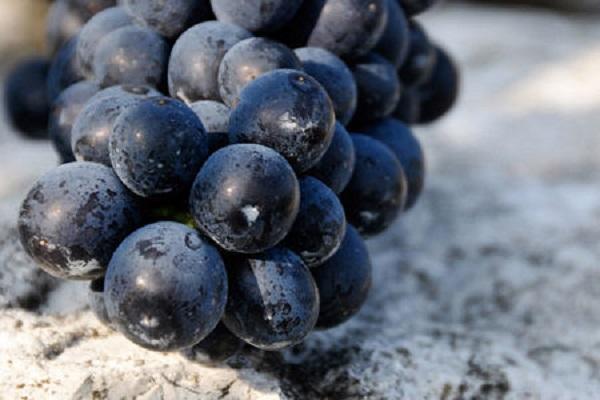
What varieties are suitable
Any available variety is suitable for making grape wine. You can make a harvest with dark, light sour grapes. They are used individually or combined with each other.
Ideal for wine are varieties like:
- Platovsky;
- Crystal;
- Regent;
- Friendship;
- Saperavi;
- Stepnyak;
- Festivalny;
- Dewdrop;
- White Muscat;
- Firstborn of Magarach;
- Feteaski;
- Sylvaner.
Such grapes are unpretentious in care and have a high sugar content. You can dilute the taste with Isabella, Lydia. Elite "wine" varieties - Sauvignon Blanc, Pinot Noir, Chardonnay, Cabernet, Aligote, Riesling can ennoble the taste of wine, reveal its gustatory palette.

What is needed for the recipe
The main products for making wine are:
- sour grapes;
- water;
- granulated sugar;
- leaven.
From the inventory you will need a glass bottle, an enameled basin, wooden spatulas for stirring the berry mass, a water seal. After washing, boiling, drying, the bottles are fumigated with sulfur.
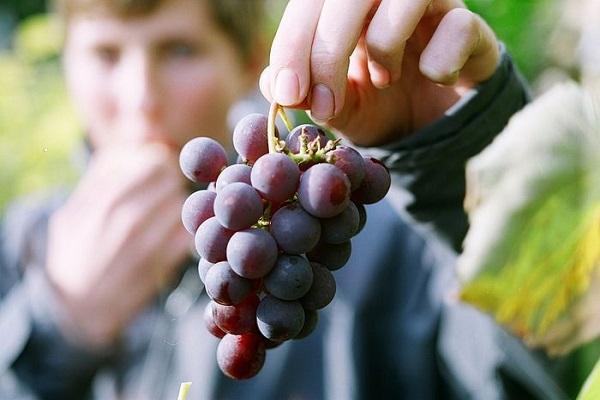
After harvesting, the berries are kneaded by hand. At this stage, it is important to use rubber gloves - they will protect the skin of the hands from staining and irritation. Gloves also prevent hand germs from entering the drink.
The fruits must be ripe. In green grapes, the acidity level is increased, there is little sugar.
Overripe fruits contribute to vinegar fermentation, the transformation of squeezed juice into acetic acid.
You can neutralize the acid by diluting the wine with water. In this case, the taste of the product may deteriorate. This technique is used when the acidity of the grapes is similar to that of lemon.
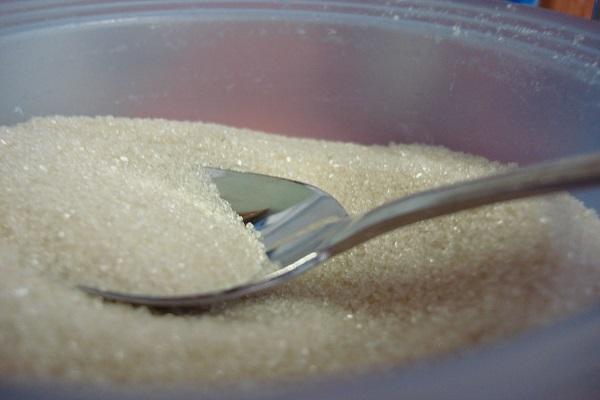
How to make wine from sour grapes at home
Moderate consumption of sour grape wine contributes to:
- prevention of diseases of the cardiovascular system;
- normalization of pressure, sleep patterns;
- improving the functioning of the digestive system, respiratory system;
- increasing immunity, relieving fatigue;
- elimination of autoimmune processes.
To prepare wine, you need to stock up:
- sour grapes 10 kg;
- granulated sugar 3 kg.
Cooking technology:
- The grapes are sorted, crushed, mixed with water.
- Mix the mass with sugar (2 kg), stir, put in heat for 4 days, stirring occasionally.
- The pulp is squeezed out, the liquid is filtered, mixed with the remaining sugar (1 kg). The mixture is stirred, poured into a clean bottle, covered with a water seal.
- After 30 days, the liquid will stop fermenting and will be covered with sediment. The wine is poured into a bottle using a rubber tube, mixed with sugar if desired.
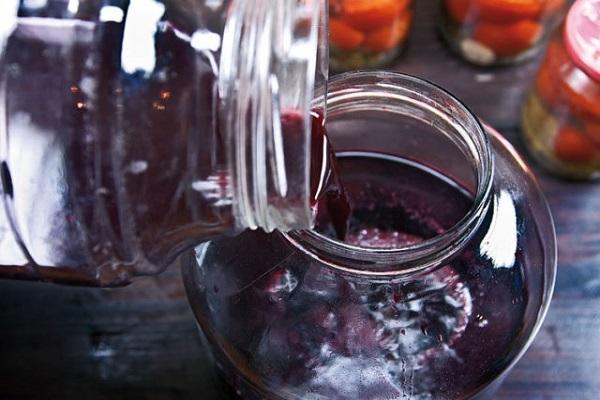
If the wort does not ferment, it is mixed with a sourdough from raisins or wine yeast. The mixture with the leaven is infused for 3-4 days. The finished drink is hermetically sealed, sent to infuse for 1 month. The liquid is filtered, poured into sterilized bottles, closed, sent to a permanent storage location.
The absence / disappearance of fermentation on the 6th day means that:
- The bottle is depressurized. In this case, the container is checked and hermetically sealed.
- The sugar content has increased. The wort becomes a preservative, stopping the fermentation process. To correct the situation, pour in water, fresh juice (20-140 ml per 1 liter of wort).
- Yeast has stopped / stopped working. They are activated with sourdough, unwashed berries or raisins, wine yeast.
- The alcohol concentration in the drink has reached 14%.
The termination of the fermentation processes is determined by the water seal - it stops gurgling. In this case, the sediment is drained, this will help maintain the transparency of the wine, aroma, and eradicate bitterness.
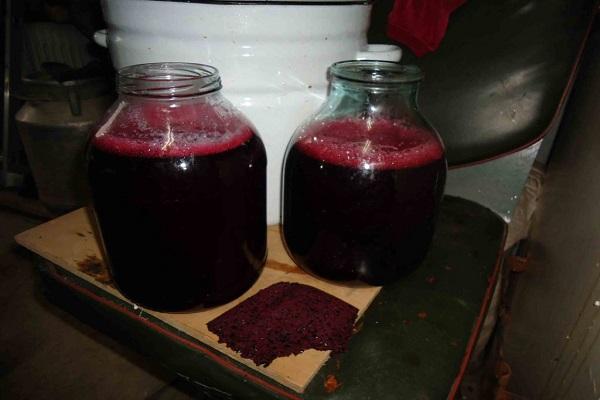
How and how much can you store
Winemakers recommend using special wine bottles - they are stronger, sealed with long plugs.
An important step is bottle sterilization. They are washed with soda / soap solution, rinsed, poured over with boiling water.
Wine is poured to the edge, leaving a distance of 1.5-2 cm. To store the drink, you must choose a dark, dry, cool place with a moderate level of humidity, such as a closet, cellar, basement. White wines are stored at + 6-7 aboutC, red - at + 8-13 aboutC. Bottles are placed horizontally - this ensures the elasticity of the corks, hermetic sealing of containers.
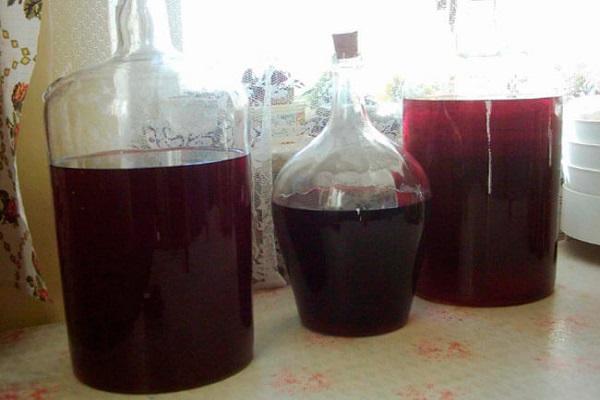
The aging period of velvety, dense, dessert, liqueur red wines is 1.5-2 years. Light red wines are consumed after the first year. It takes 6-12 months for rich aromatic white wines to mature, while light drinks are infused for 3-6 months.
